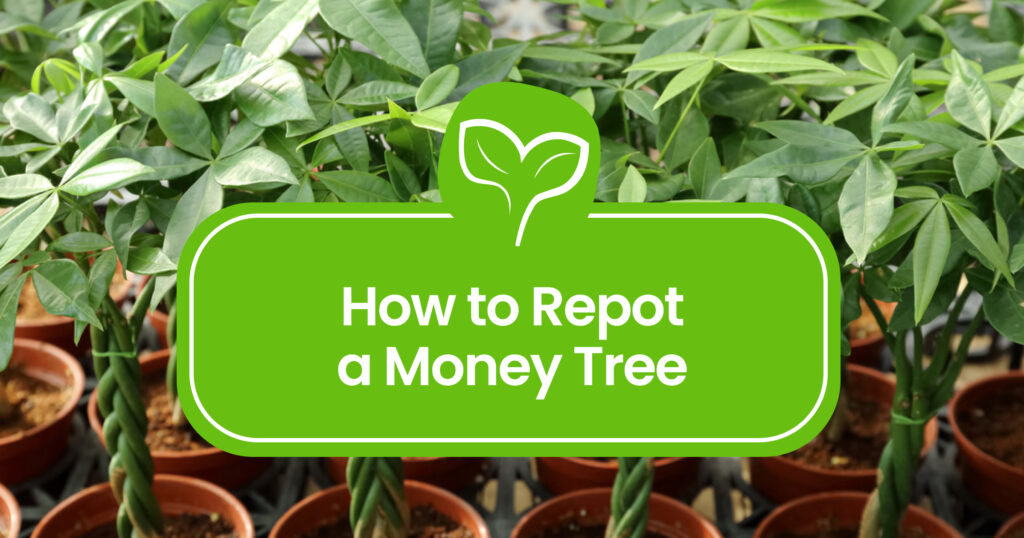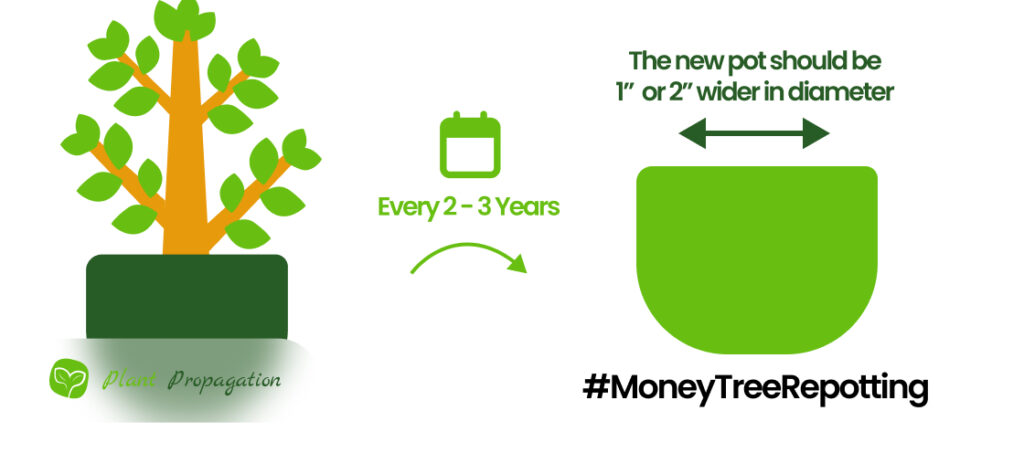
Hey there, fellow plant enthusiasts! So, your Money tree (Pachira aquatica) has been thriving, and now it’s getting a bit cramped in its current pot? Not to worry, it’s time to give your green buddy a new, spacious home. In this guide, we’ll cover everything you need to know about repotting a Money tree plant, from why you should do it to when and how often, and the nitty-gritty steps to make it a breeze. So, grab your gardening gloves, and let’s learn how to repot a money tree the right way!
Why Do I Need to Repot My Money Tree?
First things first, why should you even bother repotting your Money tree? Well, think of it like this – would you still be comfortable living in the same small room for your entire life? Probably not! Your Money tree feels the same way. Here’s why you should consider repotting:
- Root Congestion and Root-Bound Stress: As your Money tree grows, its roots start filling up the pot, leading to overcrowding. This can hinder its growth and affect its overall health. Your Money tree can also become root-bound, causing stress to the plant. Repotting prevents this.
- Nutrient Depletion: Over time – about every six months -, the soil in the pot loses its nutrients. Repotting allows you to refresh the soil, ensuring your plant gets the nutrients it needs.
- Improved Aeration: A larger pot with fresh soil promotes better aeration, which is essential for root health.
- Pests: To prevent recurring infestations of spider mites, brown scale, or mealybugs, it’s essential to repot your Money Tree in fresh soil. These pests’ eggs can keep hatching even after you’ve dealt with the adult insects, making new soil and proper sanitation crucial.
When and How Often to Repot a Money Tree Plant
Now that you know why it’s important let’s talk timing. Money trees are quite low-maintenance and don’t need frequent repotting. Here’s a general guideline:
Repot your Money tree every 2-3 years, preferably in spring or summer. This allows enough time (and light) for it to outgrow its current pot without feeling cramped. However, there are some signs to watch for:
- Roots Peeking Out: If you see roots poking out from the drainage holes or circling the surface of the soil, it’s time to repot.
- Slow Growth: If your Money tree’s growth has slowed down significantly, it might need more space and nutrients.
- Watering Issues: If the soil dries out too quickly or stays constantly wet, it could be due to a pot that’s too small.
How to Repot a Money Tree Plant
Ready to give your Money tree a roomier pad? Let’s start from the basics!
Choosing the Right Soil
Well-Draining Mix: Money trees prefer well-draining soil to prevent waterlogged roots. A peat moss-based soil mix is the best choice here.

Choosing the Right Pot
- Size Matters: Opt for a pot that’s about two inches wider in diameter than the current one. This provides room for growth without overwhelming the plant.
- Good Drainage: Ensure the new pot has drainage holes to prevent water from pooling at the bottom.

Repotting a Money Tree Step-by-Step
Here’s a step-by-step guide to help you through the process.
- Gently Remove the Plant: Carefully slide the Money tree out of its current pot. If it’s stuck, gently tap the sides to loosen the root ball.
- Inspect and Prune Roots: Check the root ball for any damaged or circling roots. Trim them with clean, sharp scissors or a pruning shear.
- Add Soil to the New Pot: Place a layer of fresh soil at the bottom of the new pot, ensuring it’s enough to elevate the plant to the right height.
- Position the Plant: Center the Money tree in the new pot and fill in the sides with more soil. Gently press the soil down as you go to eliminate air pockets.
- Water and Mulch: Give your newly repotted Money tree a good drink of water to help settle the soil. Add a layer of mulch to retain moisture and keep the roots cozy.
- Place in Adequate Light: After repotting, your Money tree might need a bit of time to adjust. Keep it in a bright, indirect light spot for a few weeks.
What Tools You’ll Need
Before you get started, make sure you have these essential tools on hand:
- Gardening Gloves: Protect your hands from dirt and potential irritants.
- Trowel: For scooping and transferring soil.
- Larger Pot: Choose a pot that’s the right size for your Money tree’s needs.
- Fresh Soil Mix: Ensure it’s well-draining and suitable for your plant. This one is pretty good for Money Trees.
- Pruning Shears: For trimming roots and any dead or damaged foliage.

Conclusion
There you have it – the ins and outs of repotting your Money tree plant. Remember, it’s not just a chore; it’s a way to show your green companion some love and care. By giving it a roomier home, you’re setting it up for years of healthy growth and prosperity. Happy gardening!
Frequently Asked Questions
Money Trees do not necessarily like to be root-bond, however, they can tolerate it to an extent. To avoid overgrown roots, you should repot your money tree every 2-3 years in a slightly bigger pot.
Should I put my money tree in water or soil?
Money Trees prefer sandy, peat moss-based soil that has good drainage, with pH levels of 6 – 7.5.
Can I propagate my money tree during the repotting process?
While repotting your Money Tree, you can take cuttings that you can root in water and transfer into soil to propagate a new plant.
Can I repot a money tree that has pests or diseases?
Giving your Money Tree a new home is often the best solution to cure it from pests and diseases. Just make sure you use a disinfected pruning shear to cut off any damaged parts of the roots, and get rid of the pests before putting it into the new pot.
